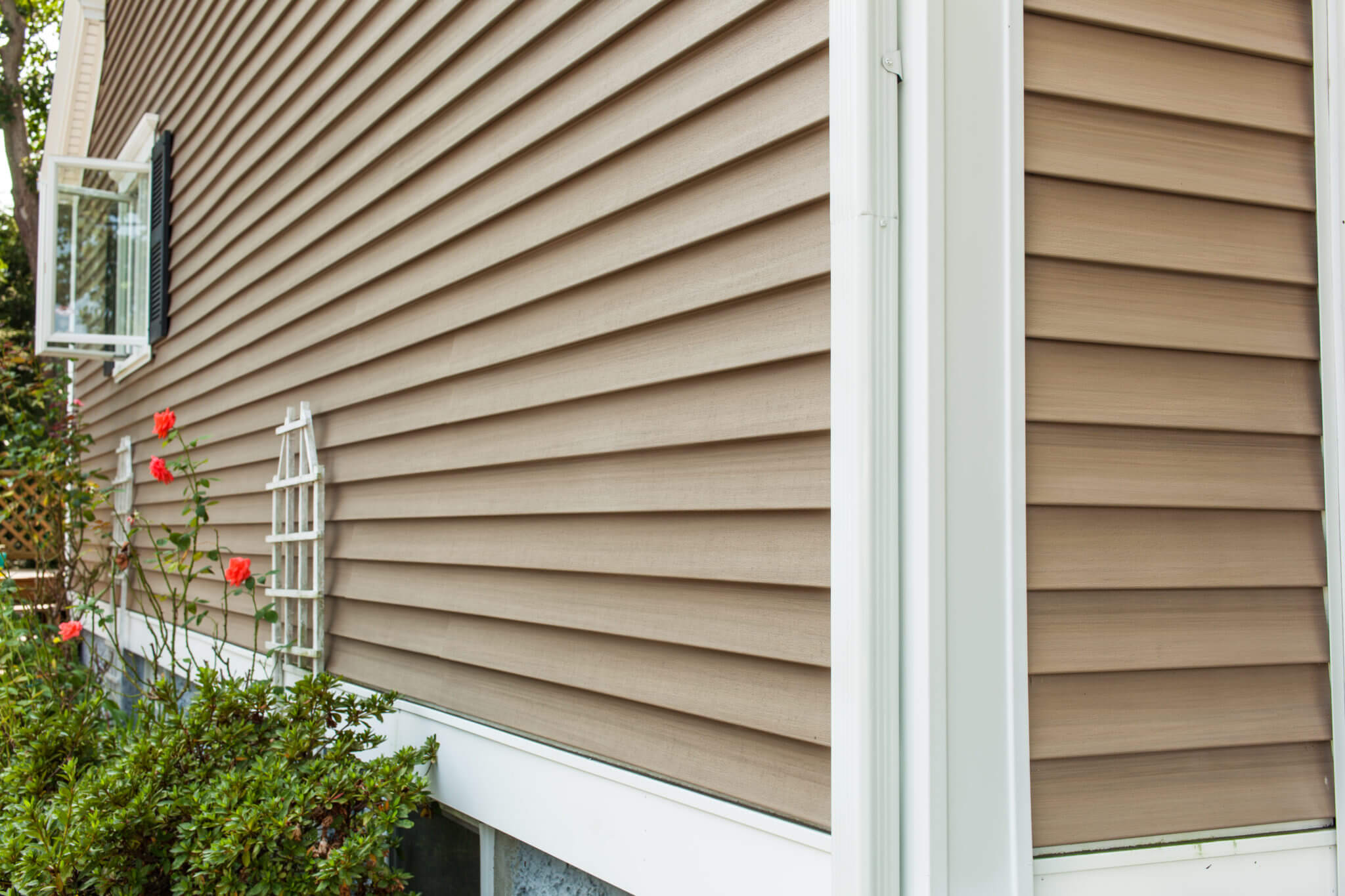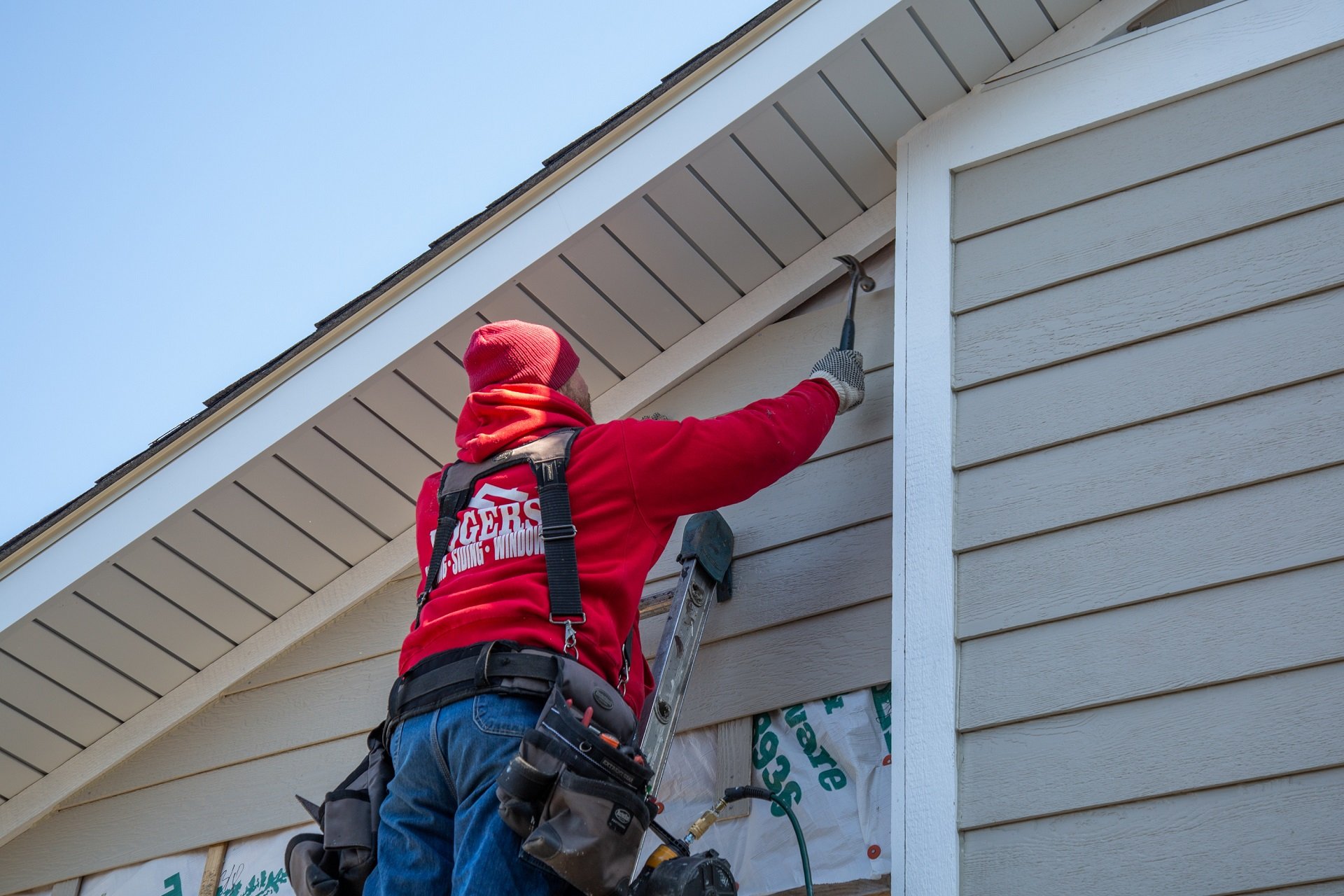Unveiling the Significance of Picking the Right Outside Sidings for Long-Term Durability
When it comes to the structural stability and visual appeal of a building, the selection of outside siding plays a crucial function. The sturdiness of siding products can considerably influence the longevity and total maintenance prices of a residential property. Nevertheless, the large variety of house siding options readily available in the market can make the decision-making procedure daunting. Understanding the essential variables that influence the longevity of exterior home sidings is essential for making notified selections that can stand the examination of time. By deciphering the intricacies surrounding this choice, a clearer path in the direction of lasting and lasting exterior siding options emerges.
Aspects Influencing Siding Sturdiness
Taking a look at the installment procedure is critical in establishing the variables affecting house siding longevity. Correct setup plays a considerable function in guaranteeing the longevity and performance of outside house sidings. Aspects such as the usage of high quality products, knowledgeable labor, and adherence to supplier standards during installation are essential for making the most of the resilience of sidings.
The kind of material utilized for home sidings is a main aspect influencing their toughness. Products like plastic, fiber timber, concrete, and metal have various levels of longevity and need particular upkeep methods. In addition, direct exposure to environmental components such as sunshine, wetness, and severe temperature levels can impact the long life of home sidings.
In addition, the quality of setup straight affects the toughness of sidings. Incorrect installment can lead to problems like bending, fracturing, or water infiltration, endangering the structural stability of the house sidings. Hiring skilled experts and adhering to correct setup procedures are vital action in guaranteeing the toughness of outside house sidings.
Impact of Climate Condition
Weather condition problems dramatically affect the efficiency and long life of outside house sidings. Direct exposure to numerous climate components such as rainfall, snow, hail storm, UV rays, and rising and fall temperature levels can influence the durability of sidings over time. For example, consistent direct exposure to dampness from rainfall or snow can cause water infiltration, triggering rot, mildew, or mold and mildew development in house sidings constructed from products like wood or fiber concrete. Extreme sunshine and UV rays can fade the color and weaken the surface of exterior sidings made of plastic or aluminum. Freezing temperature levels complied with by thawing can lead to expansion and tightening of exterior sidings, leading to splits or warping.
Selecting the right home siding material that can stand up to the specific weather of a region is important for lasting resilience. For locations vulnerable to heavy rains, products like vinyl or fiber cement that use good wetness resistance might be a lot more suitable - siding INSTALLER near me. In areas with severe temperature level variations, sturdy materials like engineered timber or steel sidings might be a much better selection. Understanding the impact of weather on exterior sidings is necessary in making educated decisions to guarantee the durability and efficiency of the home siding financial investment.
Energy Performance Factors To Consider
Offered the substantial duty climate condition play in identifying the sturdiness of exterior sidings, it is important to also think about the power effectiveness implications when selecting one of the most appropriate exterior siding material for a residential or commercial property. Energy performance is a critical element to contemplate as it straight affects a home's heating & cooling expenses. Selecting energy-efficient house siding products can add to keeping a comfy indoor temperature throughout the year while possibly minimizing energy costs. Materials such as shielded vinyl, fiber concrete, and engineered timber exterior sidings provide improved energy performance by offering far better insulation for the building. These materials aid in avoiding warmth transfer, keeping the interior colder in the summer season and warmer in the winter season, which decreases the load on home heating and cooling systems. Furthermore, energy-efficient sidings can likewise add to a more ecologically friendly and sustainable property by minimizing total energy usage. Consequently, when picking outside sidings, considering their energy efficiency can result in long-lasting cost savings and a more eco conscious choice for the residential property.
Upkeep Requirements and Expenses

Vinyl exterior siding normally has reduced maintenance expenses compared to timber or fiber cement house siding, as it does not need frequent painting or discoloration. It is vital to aspect in long-term upkeep costs when at first selecting a YOURURL.com siding product to make sure that the total lifetime expenses straighten with your budget plan.
Longevity and Roi
Understanding the long life of different exterior house siding products is essential for property proprietors seeking to maximize their roi. Selecting a home siding material with a lengthy life-span can dramatically affect the general cost-effectiveness of a residential property. Plastic siding, for instance, is recognized for its sturdiness and low upkeep requirements, which can add to long-term financial savings for homeowners. Fiber cement house siding is one more alternative recognized for its durability, with some producers using warranties of up to half a century. While preliminary setup prices may differ between house siding materials, selecting a long lasting option can cause reduced repair service and substitute costs over time.
In regards to roi, exterior siding products that use durability click to find out more can improve the value of a property. Possible buyers are commonly ready to pay more for a home with premium, durable home siding that requires very little upkeep. Additionally, selecting a resilient home siding product can help raise aesthetic allure, making the residential or commercial property extra eye-catching to possible customers. By taking into consideration the longevity of outside siding materials, residential or commercial property owners can make educated decisions that profit them in the future.
Conclusion

The resilience of house siding products can dramatically affect the longevity and total maintenance expenses of a home. Recognizing the influence of climate conditions on exterior house sidings is crucial in making informed decisions to make certain the long life and efficiency of the siding investment.
Given the significant duty weather conditions play in establishing the toughness of outside home sidings, it is important to likewise consider the power performance effects when choosing the most suitable home siding material for a home. Vinyl siding commonly has lower upkeep costs compared to timber or fiber concrete siding, as it does not call for frequent painting or discoloration. By very carefully thinking about these elements and choosing the appropriate material, residential or commercial property proprietors click here now can optimize the longevity and return on financial investment of their exterior house siding.